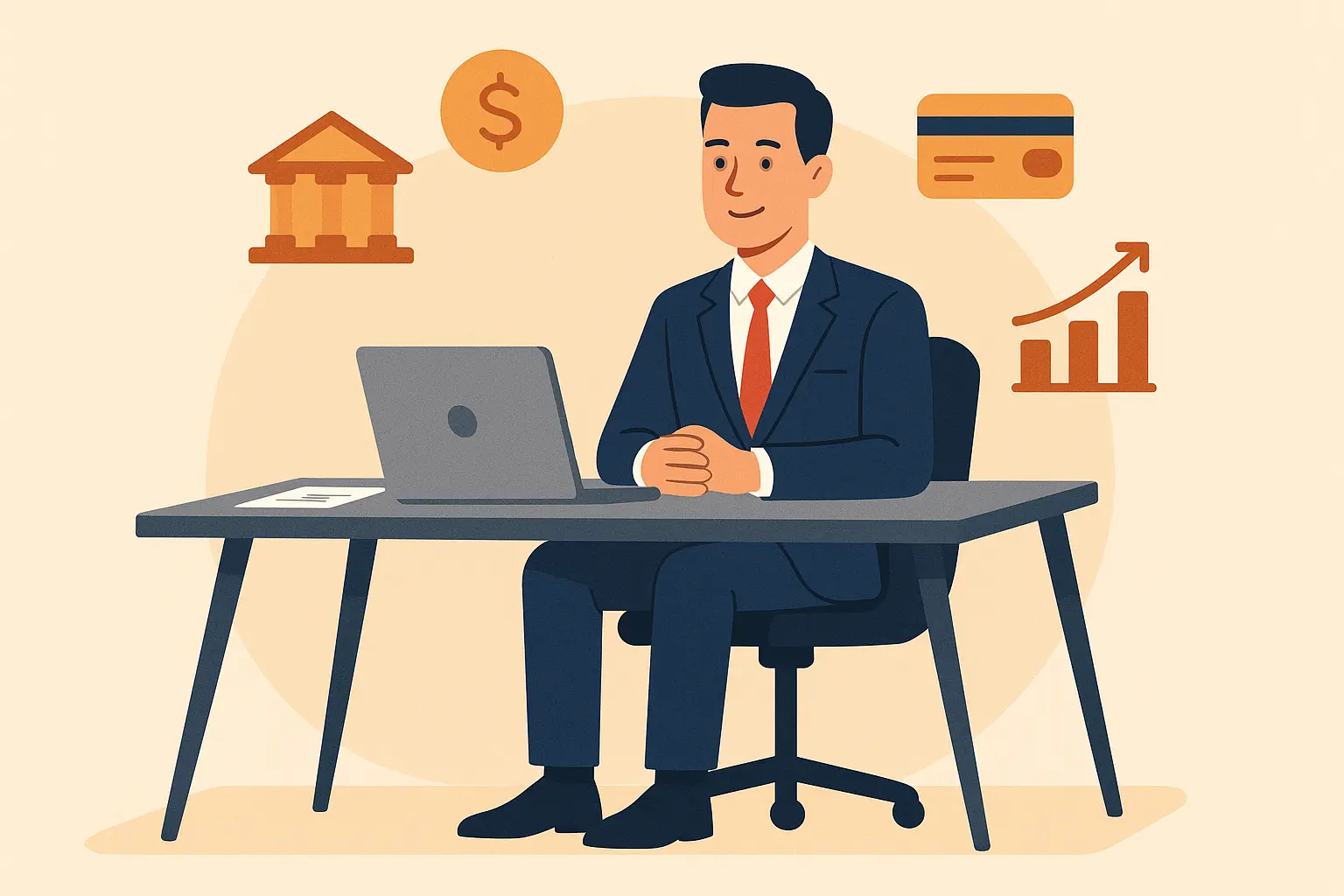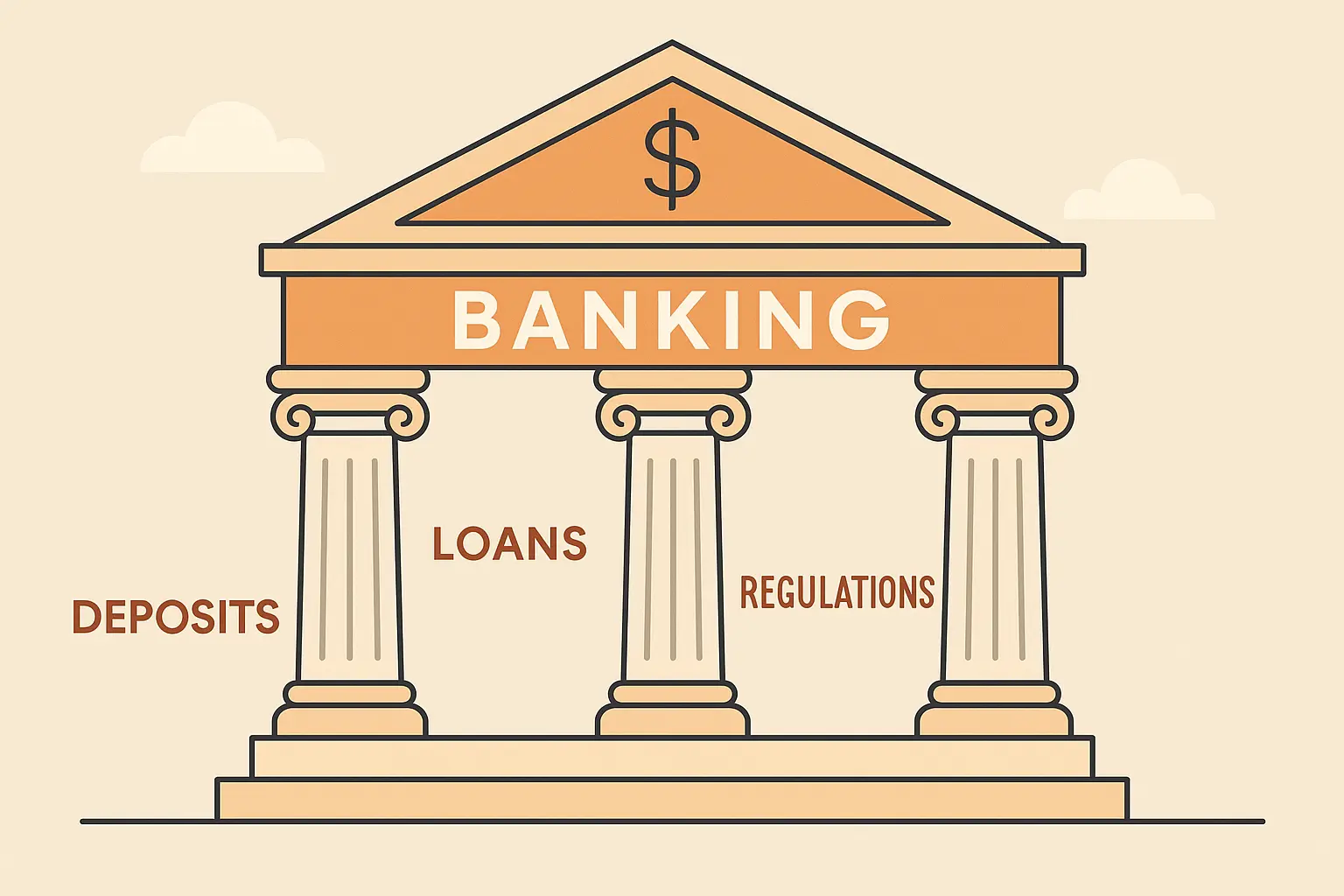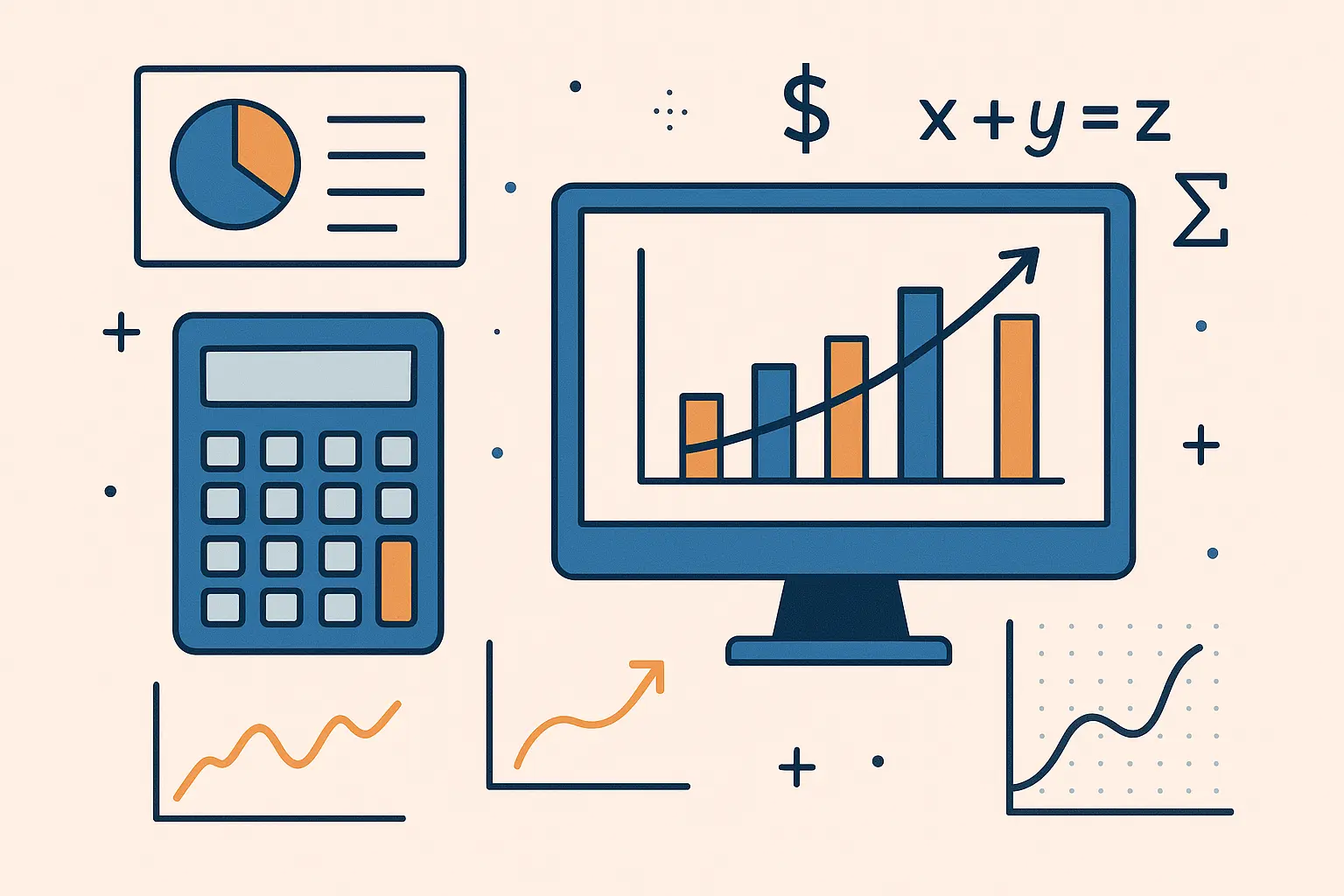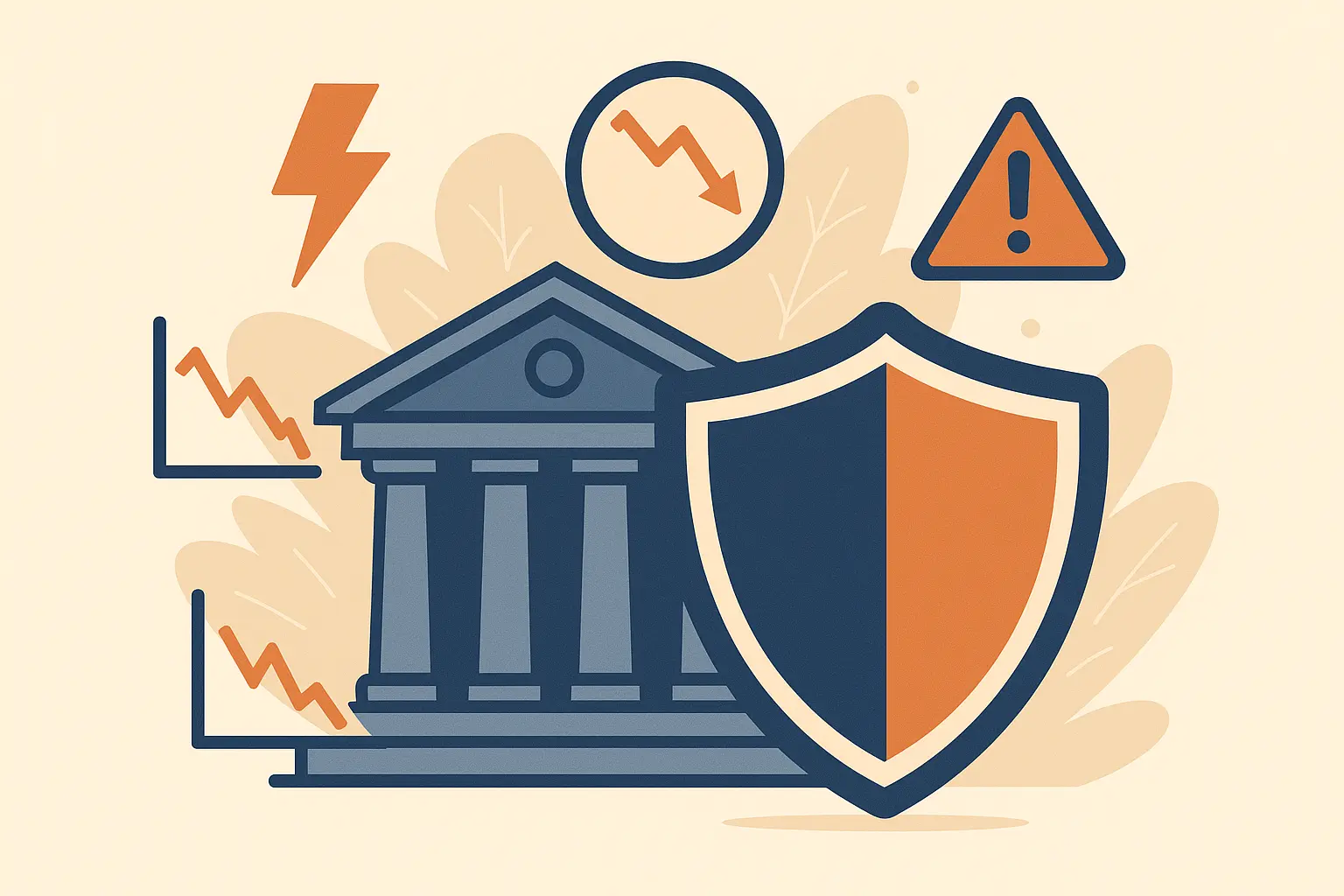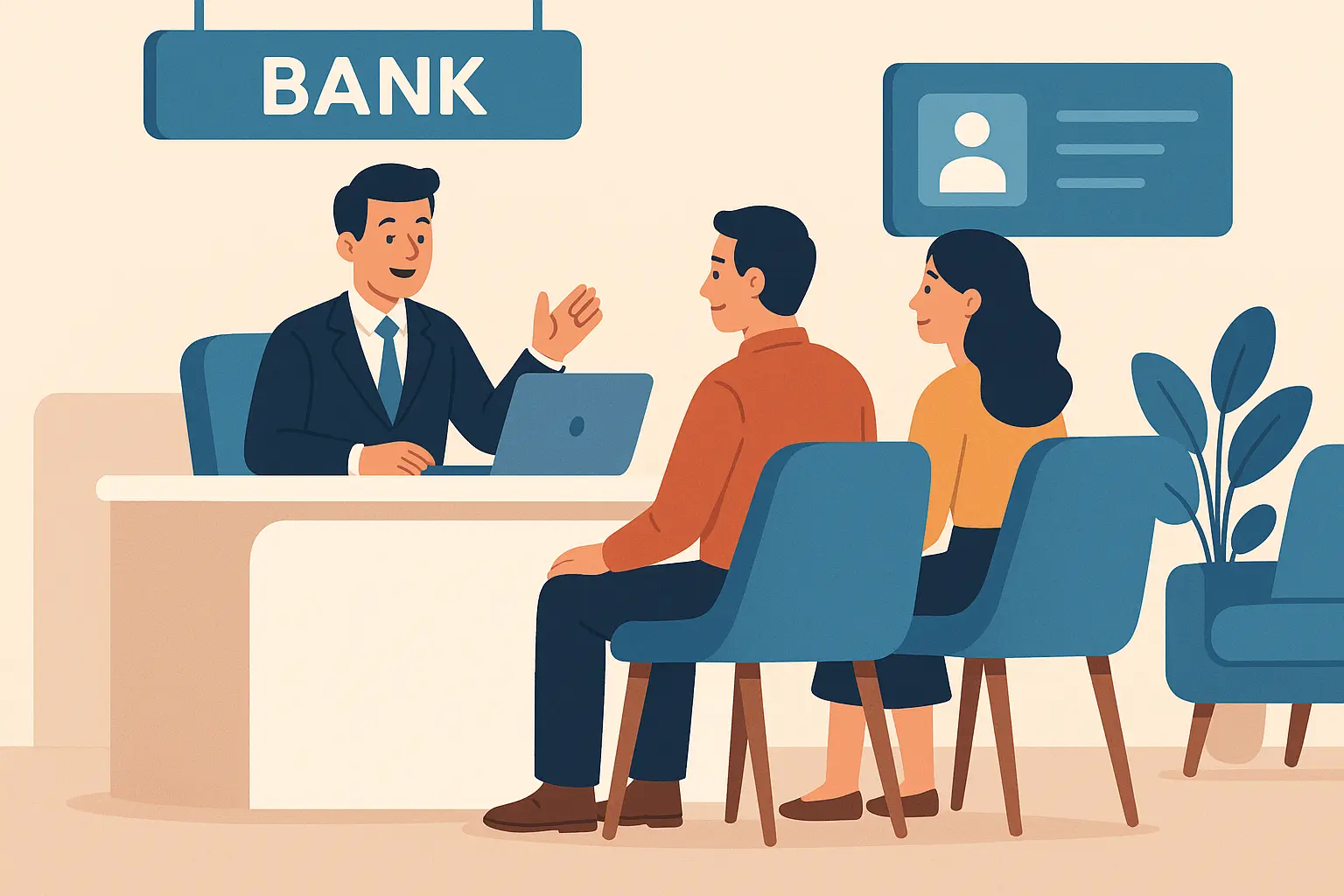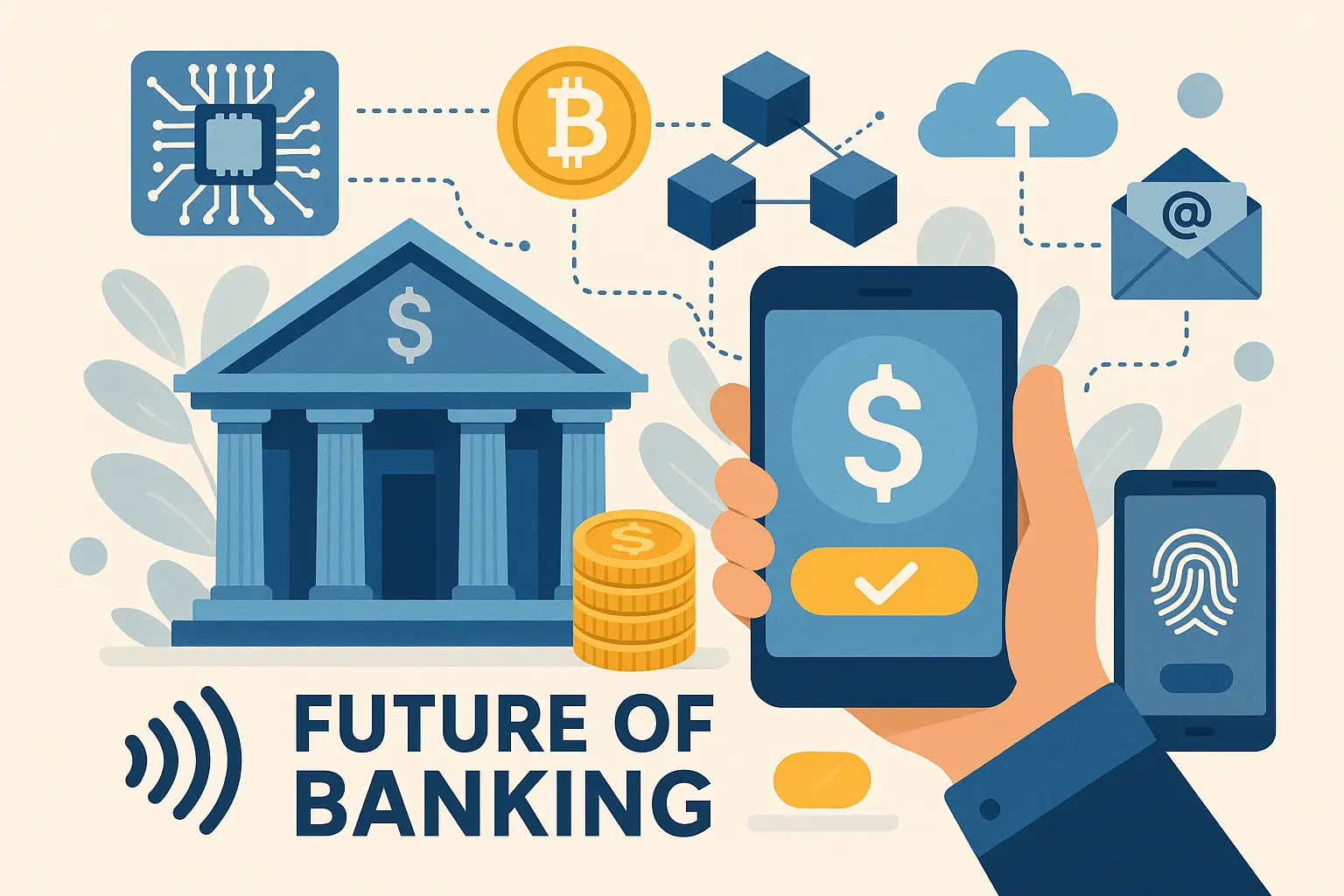25 Banking Interview Questions That Will Make or Break Your Career

Here’s the thing about banking interviews today – memorizing definitions from your finance textbook won’t cut it anymore. According to Mergers & Inquisitions, investment banking interviews aren’t rocket science, yet countless candidates still bomb their preparation.
I remember my first banking interview – walking into that glass tower, palms sweating like I’d just run a marathon, wondering if I’d memorized enough formulas. What I didn’t realize then was that success isn’t about cramming 500+ questions like you’re studying for the SATs. It’s about mastering the core stuff that actually matters and understanding what these banking interview questions are really testing you on.
Trust me on this one – after years in banking and sitting on both sides of the interview table, I’ve learned what separates candidates who get offers from those who get polite rejection emails.
What You’re Really Up Against
Let’s be honest about what you’re walking into. Banking interviews are designed to stress-test you – they want to see how you handle pressure, think on your feet, and explain complex stuff without sounding like a textbook.
The good news? Most candidates make the same mistakes, so standing out isn’t as hard as you think. The bad news? You can’t wing this. Technical knowledge takes months to build, not days.
The Core Categories That Actually Matter
Most banking interview questions fall into these four categories, and interviewers use them to quickly see if you have the fundamentals.
- Your Story – Why banking, why this bank, why you
- Behavioral Fit – Can you handle the pressure and work with the team
- Technical Knowledge – Do you actually understand finance and banking
- Market Awareness – What’s happening in the industry right now
Basic Banking Fundamentals Questions
These five questions separate people who’ve done their homework from those who think banking is just “handling money.” Master these, and you’ll sound like you actually belong in the industry.
These are the most common banking interview questions every candidate should expect, and mastering them shows you understand the basics.
1. What’s the difference between commercial banking and investment banking?
Look, this is Banking 101, but you’d be amazed how many people mess this up by giving textbook answers that sound like they memorized Wikipedia.
Here’s the real-world difference: Commercial banking is what your parents use. Checking accounts, mortgages, business loans for the local pizza shop. These banks make money on the spread – they pay you 1% on your savings and charge 5% on loans. Pretty straightforward.
Investment banking? That’s a whole different animal. These guys work with big corporations and governments on major deals. Think IPOs, mergers, acquisitions – the stuff you read about in the Wall Street Journal. Instead of interest spreads, they make money on fees and commissions from these massive transactions.
Here’s what makes you sound smart: JPMorgan Chase does both. Their commercial side processes your paycheck deposit, while their investment bankers advised on Microsoft’s $68.7 billion Activision Blizzard deal. Same company, completely different worlds.
Pro tip: Don’t just recite definitions. Explain why this matters – commercial banks serve Main Street, investment banks serve Wall Street.
2. Explain fractional reserve banking (without putting everyone to sleep)
Think of fractional reserve banking like this: When you put $100 in the bank, they don’t stick it in a vault with your name on it. Instead, they keep maybe $10 as insurance and lend out the other $90 to someone buying a car.
Here’s where it gets interesting – that $90 loan gets deposited somewhere else, and that bank keeps $9 and lends out $81. This keeps going, creating way more money in the system than actually exists in cash.
It’s like financial magic, except when it goes wrong. Remember the 2008 crisis? Part of the problem was banks got too aggressive with this system. That’s why we have FDIC insurance and why the Federal Reserve watches this stuff like a hawk.
The bottom line for your interview: This system lets banks make money and keep the economy moving, but it requires careful oversight to prevent disasters.
3. How do commercial banks actually make money?
This is where candidates either show they understand business or reveal they think banks are just fancy piggy banks.
Net interest income is the big one. Banks are basically in the business of borrowing money cheap and lending it expensive. They pay you 1% on savings but charge 5% on mortgages – that 4% spread across billions of dollars adds up fast.
Fee income is everywhere once you start looking. ATM fees, overdraft charges, wire transfers, credit card swipe fees every time you buy coffee. Those $3 ATM fees might annoy you, but they’re pure profit for banks.
Then there’s investment income from their securities portfolios. Banks don’t just sit on cash – they invest in government bonds and other safe securities to squeeze out extra returns.
Here’s what nobody tells you: The best commercial banks are really good at cross-selling. They get you in with a checking account, then sell you a mortgage, credit card, investment account, and insurance. Each product increases their revenue per customer.
4. What’s liquidity risk and why should banks care?
Liquidity risk is basically the nightmare scenario where everyone wants their money back at the same time, but the bank doesn’t have enough cash on hand.
Think of it like this: You lend money to friends expecting to get paid back over time. But if everyone you know suddenly needs to borrow money from you RIGHT NOW, you’re in trouble even if you’re technically wealthy.
Banks manage this through several smart strategies:
Liquidity buffers – They keep cash and easily sellable assets (like Treasury bonds) as emergency funds. It’s like keeping some money in your checking account instead of investing everything.
Stress testing – They run “what if” scenarios. What if unemployment spikes? What if there’s another pandemic? What if everyone panics and wants to withdraw money?
Backup plans – Credit lines with other banks, access to Federal Reserve emergency funding. It’s like having multiple credit cards for emergencies.
Real-world example: Northern Rock bank in the UK was profitable but collapsed in 2007 because they couldn’t get cash when they needed it. Customers saw the news, panicked, and created the first British bank run in 150 years.
5. What does the Federal Reserve actually do?
The Federal Reserve is like the bank for banks – and they have way more power than most people realize.
Monetary policy is their biggest job. They control interest rates, which affects everything from your mortgage to business loans to stock prices. When they raise rates, borrowing gets more expensive and the economy usually slows down. Lower rates do the opposite.
Bank supervision means they’re the cops of the banking world. Fed examiners show up regularly to make sure banks aren’t doing anything stupid or illegal. They can shut down banks that break the rules.
Payment systems – Ever wonder how money moves between banks? The Fed runs the plumbing that makes it all work. Without them, your direct deposit wouldn’t work and checks would be worthless.
Crisis management – When banks get in trouble, the Fed can provide emergency loans to prevent panic. During 2008, they basically kept the financial system from collapsing.
Here’s the key insight: The Fed tries to balance economic growth with financial stability. Too much growth creates bubbles, too little creates recessions. It’s a constant balancing act.
Technical Banking Knowledge Questions
This is where the more advanced banking interview questions come in — the ones that separate candidates who just studied definitions from those who can apply concepts. Okay, here’s where things get real. These questions separate the people who actually understand finance from those who just sound good in conversation. You can’t fake your way through these.
6. How do you calculate debt-to-equity ratio (and why anyone should care)?
This is Finance 101, but here’s how to answer it without sounding like a calculator.
The formula: Total Debt ÷ Total Shareholders’ Equity
Real example: Company has $500,000 in debt and $250,000 in equity. That’s $500k ÷ $250k = 2.0. So they have $2 of debt for every $1 of equity.
Why this matters: Higher ratios mean more risk. A company with a 2.0 ratio is way more leveraged than one with a 0.5 ratio. If business gets tough, the highly leveraged company might struggle to pay its debts.
Here’s the insider knowledge: Context is everything. A utility company with steady cash flows can handle higher debt ratios than a tech startup with unpredictable revenue. Banks look at industry norms, not just the raw number.
Pro tip: Don’t just calculate – explain what you’d do with the information. “If I saw a rising D/E ratio in a borrower, I’d want to understand why and whether it’s temporary or part of a troubling trend.”
7. APR vs APY – why this matters more than you think
Most people think these are the same thing. They’re not, and the difference shows whether you actually understand how money works.
APR (Annual Percentage Rate) is what borrowing costs you. It includes interest plus fees, so you can compare loans fairly. Your mortgage might have a 4% interest rate but a 4.25% APR once you factor in origination fees and other costs.
APY (Annual Percentage Yield) is what you earn on savings or investments, including compound interest effects. A savings account paying 5% compounded monthly gives you an APY of about 5.12% because your interest earns interest.
Here’s the key difference: APR assumes simple interest, APY includes compounding.
Why banks care: They’re legally required to show APR on loans (Truth in Lending Act) and APY on deposits. It’s about fair comparison shopping for consumers.
Real-world application: When you’re comparing a 3% CD that compounds daily versus one that compounds annually, the APY tells you which actually pays more. The daily compounding CD has a higher APY even though both have the same 3% rate.
8. Credit default swaps – the insurance that nearly broke the world
CDSs are basically insurance for bonds and loans, but they got way more complicated than that.
How it works: Bank A owns $10 million in corporate bonds but worries about default. So they buy CDS protection from Bank B, paying quarterly premiums. If the company defaults, Bank B compensates Bank A for losses.
Where it got crazy: You didn’t need to own the bonds to buy the insurance. It became pure speculation – like buying fire insurance on your neighbor’s house and hoping it burns down.
The 2008 connection: AIG sold massive amounts of CDS protection without enough reserves to pay claims. When housing collapsed, they owed more money than they had. The government had to bail them out because their failure would have triggered a global financial meltdown.
Current usage: Banks still use CDSs for legitimate risk management – hedging credit exposure without selling assets. But there’s much more regulation and oversight now.
Interview insight: This shows you understand how financial innovation can be useful but also dangerous when it gets out of control.
9. How banks set interest rates (it’s more complex than you think)
Banks don’t just pick random numbers. Rate setting involves multiple factors that all interact.
Base rate: They start with benchmark rates like the federal funds rate or Treasury yields. This reflects their cost of funding and general market conditions.
Risk assessment: This is the big one. Higher-risk borrowers pay more because they’re more likely to default. Banks analyze credit scores, income, debt ratios, collateral, and business cash flows.
Operational costs: Loan officers, underwriters, and compliance people don’t work for free. These costs get built into rates.
Competition: Banks balance profit with market share. They might accept lower margins on prime customers to build relationships while charging premium rates for specialized lending.
Loan characteristics matter too: Longer terms usually mean higher rates due to interest rate risk. Secured loans cost less than unsecured ones because collateral reduces losses.
Real example: A small business loan might start with a 4% base rate, add 2% for credit risk, 0.5% for operational costs, then adjust based on competition and relationship value. Final rate: around 6.5%.
10. Basel III – the rules that changed everything
Basel III sounds intimidating, but it’s basically building codes for banks. After 2008, regulators decided banks needed stronger foundations.
Capital requirements are the core. Banks must maintain minimum ratios:
- Common Equity Tier 1: 4.5%
- Total Tier 1 capital: 6%
- Total capital: 8%
Think of this as requiring banks to have enough of their own money at risk so they can’t gamble with just depositor funds.
Liquidity Coverage Ratio requires banks to hold enough liquid assets to survive a 30-day crisis. No more relying on short-term funding that can disappear overnight.
Net Stable Funding Ratio ensures stable funding over one year. Banks can’t fund long-term loans with overnight borrowing anymore.
Leverage ratio provides a backstop – minimum 3% regardless of how “safe” the bank claims its assets are.
Real impact: Banks raised hundreds of billions in new capital, changed their funding strategies, and enhanced risk management. Compliance costs increased, but the system became much more stable.
Why this matters for your interview: It shows you understand that banking isn’t just about making money – it’s about managing risk in a heavily regulated environment.
Risk Management and Compliance Questions
These banking interview questions test whether you can think beyond formulas and understand the bigger picture of risk and regulation. Here’s where banks separate the people who can think strategically from those who just follow rules. Risk management isn’t just about compliance – it’s about protecting the bank while still making money.
11. The different types of risks banks face (and why they lose sleep over them)
Banks face more types of risk than most people realize. Here are the big ones that keep executives awake at night:
Credit risk is the obvious one – borrowers not paying back loans. But it’s more nuanced than just “will they pay?” It includes concentration risk (too many loans to one industry), country risk (lending internationally), and counterparty risk (other banks failing).
Market risk comes from price movements in interest rates, currencies, stocks, and commodities. A bank holding long-term bonds gets hammered when interest rates rise. Trading operations create additional exposure that requires constant monitoring.
Operational risk covers everything that can go wrong internally – system failures, employee fraud, natural disasters, cyber attacks. Remember JPMorgan’s “London Whale” trading loss? That was operational risk in action.
Liquidity risk is about having cash when you need it. Northern Rock was profitable but collapsed because they couldn’t get funding when markets panicked.
Reputational risk can destroy decades of relationship-building overnight. Wells Fargo’s fake account scandal shows how reputational damage can persist for years, affecting everything from customer acquisition to regulatory relationships.
Regulatory risk emerges from changing rules. New regulations can force expensive operational changes or limit profitable activities.
The key insight: These risks interact with each other. A cyber attack (operational risk) can damage reputation, trigger customer withdrawals (liquidity risk), and attract regulatory scrutiny (regulatory risk) all at once.
12. How to assess if someone should get a loan
Credit analysis is part art, part science. Here’s how professionals actually do it:
The “5 Cs” framework gives you structure:
- Character: Will they pay? (credit history, references, reputation)
- Capacity: Can they pay? (income, cash flow, debt ratios)
- Capital: What’s their cushion? (net worth, down payment, reserves)
- Collateral: What can we take if they don’t pay? (real estate, equipment, guarantees)
- Conditions: What’s the environment? (economy, industry, regulations)
For individuals: Credit scores provide a starting point, but you dig deeper. Stable employment history matters more than high income that just started. Debt-to-income ratios show capacity, but you also stress-test – what if they lose their job or get sick?
For businesses: Three years of financial statements tell the story. You’re looking for consistent cash flows, reasonable leverage, and competent management. Industry knowledge is crucial – a restaurant requires different analysis than a tech company.
Red flags: Declining trends, too much debt, poor management, industry headwinds, or desperation (needing money urgently usually means trouble).
Real example: A $500,000 business loan request with $200,000 annual cash flow and $120,000 existing debt payments gives a 1.67x coverage ratio. That’s adequate but not strong – I’d want additional collateral or guarantees.
13. Know Your Customer (KYC) – why banks ask so many questions
KYC isn’t just bureaucratic paperwork – it’s the defense against money laundering, terrorism financing, and regulatory disasters.
Customer identification requires government ID, proof of address, and for businesses, beneficial ownership information. You need to know who really controls the company, not just who signs the papers.
Customer due diligence goes deeper – understanding their business, expected transaction patterns, and source of funds. A cash-intensive business like a restaurant has different patterns than a consulting firm.
Enhanced due diligence kicks in for high-risk customers – politically exposed persons (PEPs), businesses in high-risk countries, or customers with unusual patterns. These relationships need senior management approval and extra monitoring.
Ongoing monitoring means watching for suspicious activity. Large cash deposits, wire transfers to high-risk countries, or transactions that don’t match the customer’s profile all trigger reviews.
Why this matters: KYC failures cost banks massive fines. Deutsche Bank paid $150 million in 2017 for KYC failures related to Jeffrey Epstein. But beyond compliance, it protects the bank’s reputation and prevents criminal abuse of the financial system.
The reality: Good KYC is expensive and time-consuming, but the alternative – being used by criminals or terrorists – can destroy a bank’s business and land executives in prison.
14. Stress testing – planning for when everything goes wrong
Stress testing forces banks to think about worst-case scenarios before they happen. It’s like running fire drills, except the fire could destroy the entire financial system.
How it works: Banks model their performance under severely adverse conditions – deep recessions, unemployment spikes, market crashes, or pandemic-like disruptions. They project loan losses, revenue declines, and capital impacts over several years.
Regulatory stress tests like the Fed’s CCAR require large banks to prove they can maintain minimum capital ratios even under stress. Banks that fail face restrictions on dividends and share buybacks.
Scenario design considers various risks. The 2020 tests included pandemic scenarios with massive unemployment. Historical scenarios might model conditions like the 2008 crisis or 1970s stagflation.
Beyond compliance: Smart banks run internal stress tests for specific risks – commercial real estate concentration, oil price shocks, cyber attacks, or major customer defaults.
Real impact: Results influence capital planning, dividend policies, and business strategies. If stress tests show weakness in commercial lending, banks might reduce exposure or raise more capital.
The key insight: Stress testing is forward-looking, forcing banks to consider risks they haven’t experienced recently. It’s about preparing for problems before they become crises.
Customer Service and Sales Questions
Here’s where your people skills matter as much as your technical knowledge. Banking is ultimately about relationships, and these questions test whether you can handle real-world customer situations.
15. Handling unauthorized charges – when customers are panicking
Unauthorized charge complaints require immediate action and careful investigation. Here’s how to handle them without losing your cool or the customer.
Listen first, act second. Let them explain everything without interrupting. Panicked customers need to feel heard before they can focus on solutions. Show empathy: “I understand how concerning this must be, and I’m here to help resolve this immediately.”
Take protective action fast. If fraud is suspected, freeze affected cards or accounts to prevent more damage. Rush new cards – customers shouldn’t be stuck without access to their money while you investigate.
Investigate thoroughly. Review account activity, transaction details, merchant information, and timing patterns. Look for geographic inconsistencies or spending that doesn’t match their usual behavior.
Document everything. Every detail matters for regulatory compliance and potential law enforcement. Record customer statements, your analysis, and all actions taken.
Communicate clearly. Explain the process, provide realistic timelines, and give regular updates. Customers handle uncertainty better when they know what’s happening and when.
Follow regulations. Provisional credits under Regulation E might be required immediately, with final determination after investigation. Know your bank’s policies and legal requirements.
The reality check: Most “unauthorized” charges turn out to be legitimate but forgotten transactions. Handle each case seriously, but don’t assume fraud until you’ve investigated.
16. Cross-selling without being pushy
Cross-selling done right helps customers while growing bank revenue. Done wrong, it destroys relationships and creates scandals like Wells Fargo’s fake account mess.
Start with discovery, not products. Ask about their financial goals, life changes, and current challenges. Someone opening a checking account might mention buying a house, starting a business, or planning retirement – each represents genuine opportunities to help.
Listen for pain points. If they complain about low savings account interest, that’s an opening to discuss CDs or investment options. If they’re frustrated with high credit card rates, maybe they qualify for a personal loan at better terms.
Match solutions to needs. Don’t recommend premium accounts to someone maintaining low balances. Instead, suggest automatic savings programs or budgeting tools to help them build wealth.
Time it right. Customers overwhelmed with account opening aren’t receptive to additional products. Focus on their immediate needs first, then schedule follow-up conversations for other services.
Focus on benefits, not features. Instead of describing CD terms, explain how CDs help achieve specific savings goals with guaranteed returns and FDIC protection.
Be genuinely helpful. Products must actually benefit customers, not just generate bank revenue. Building trust through honest advice creates loyal customers who refer friends and family.
Know when to stop. If they’re not interested, back off gracefully. Pushing too hard destroys the relationship you’re trying to build.
17. Explaining complex products without losing people
Complex financial products require breaking down technical concepts into understandable terms while ensuring customers can make informed decisions.
Use the “SIMPLE” method:
- Simplify language – avoid jargon completely
- Illustrate with examples customers can relate to
- Make it relevant to their situation
- Pause for questions regularly
- Link benefits to their goals
- Ensure they understand before moving forward
Real-world analogies work best. For CDs: “Think of a CD as making a promise with the bank. You agree to leave your money with us for 12 months, and we promise to pay you a higher rate than regular savings. You get a bonus for being patient.”
Connect to their goals. For retirement planning: “A 401(k) gives you free money from your employer. Contribute $100, they might add $50. That’s an immediate 50% return before any investment gains.”
Check understanding constantly. Ask “Does this make sense?” or “What questions do you have?” Don’t assume nodding means comprehension.
Use visual aids. Charts, graphs, or simple drawings help explain concepts like compound interest or asset allocation better than words alone.
Verify comprehension. Before any decisions, ask customers to explain the product back to you in their own words. This ensures they truly understand what they’re considering.
18. ATM limits – when customers need more cash
ATM withdrawal limits frustrate customers, but they exist for good reasons. Here’s how to handle these situations professionally.
Acknowledge their frustration first. “I understand you need more cash than our ATM allows. These limits help protect your account from fraud and ensure ATMs stay stocked for all customers.”
Explore their specific needs. Emergency situations require different solutions than planned purchases. Someone needing cash for a medical emergency has different options than someone buying a car.
Offer practical alternatives:
- Branch visits during business hours for larger withdrawals with proper ID
- Cashier’s checks for major purchases – often preferred by recipients over large cash amounts
- Wire transfers for urgent payments, though fees apply
- Temporary limit increases might be possible for established customers with good history
Use it as a service opportunity. Discuss account features that might prevent future issues – higher-tier accounts with increased limits, online banking options, or mobile deposit capabilities.
Be proactive about solutions. If they need regular access to larger amounts, help them find the right account type or banking relationship to meet their needs.
Follow security protocols. Large cash withdrawals require proper verification and documentation, especially for amounts triggering reporting requirements.
Behavioral and Situational Questions
These questions reveal who you really are under pressure. Use the STAR method (Situation, Task, Action, Result) but make your stories feel genuine, not rehearsed.
19. Working under pressure – your moment to shine
Everyone says they work well under pressure, but can you prove it with a real story that doesn’t sound rehearsed?
Here’s how I’d answer this based on a real situation:
Situation: “Our team had three days to process 200 loan applications after a system outage delayed our normal workflow. Quarter-end was immovable due to regulatory reporting, and customers were depending on approvals for time-sensitive purchases.”
Task: “As senior analyst, I needed to coordinate five people to complete thorough credit analysis while maintaining quality standards. Rushing could lead to bad lending decisions that would hurt us long-term.”
Action: “I organized the team by strengths – two on financial analysis, two on credit verification, and I handled final approvals. We created a shared tracking system to monitor progress and identify bottlenecks. I negotiated for two analysts from another department and arranged overtime approval. We established quality checkpoints every four hours.”
Result: “We processed all 200 applications on time with our normal 98% accuracy rate. More importantly, we identified process improvements that prevented future crises – backup systems and cross-training initiatives.”
Key insight: Don’t just describe what happened – explain what you learned and how it made you better at handling pressure.
20. Staying current with regulations – show you’re genuinely interested
This question tests whether you’re serious about a banking career or just looking for any job that pays well.
Multiple information sources: “I subscribe to American Banker and Banking Dive for daily updates. The Financial Brand covers technology trends affecting customer experience.”
Professional development: “My Risk Management Association membership provides research reports and webinars where practitioners share real-world experiences with new regulations.”
Direct from the source: “I check Federal Reserve, FDIC, and OCC websites weekly for new guidance and proposed rules. Understanding regulatory thinking helps anticipate future requirements.”
Formal education: “I’ve completed recent programs on Basel III implementation and cybersecurity risk management through banking schools.”
Networking matters: “Industry conferences like the ABA National Conference let me hear directly from regulators about their priorities. Informal conversations with colleagues at other banks often reveal practical implementation challenges.”
Stay connected: “I follow key thought leaders on LinkedIn who provide real-time analysis of regulatory developments and their practical implications.”
The key: Show this is systematic, not random. You’re not just staying informed – you’re building expertise.
21. Handling confidential information – trust is everything
Banking runs on trust, and this question tests your understanding of professional discretion.
Situation: “I was assigned to a due diligence team for a potential bank acquisition. This involved accessing highly sensitive financial data, customer information, and strategic plans that could significantly impact both institutions if disclosed.”
Task: “I needed to analyze the target bank’s loan portfolio and prepare risk assessments while maintaining absolute confi dentiality about the transaction.”
Action: “I signed additional confidentiality agreements and attended security briefings. All work stayed in a secure conference room with limited access. I used only designated computers and never discussed any details outside the authorized team. When colleagues asked about my assignment, I simply said I was working on a special project.”
Result: “The due diligence concluded without any leaks. The acquisition was completed successfully, and my discretion was specifically noted in my performance review.”
The deeper point: “This reinforced that confidentiality isn’t just about following rules – it’s about maintaining the trust that enables business relationships and protects all stakeholders.”
22. Colleague conflicts – show you can work with difficult people
Banking requires teamwork, even when personalities clash. Here’s how to handle this question:
Situation: “A relationship manager wanted to approve a commercial loan that I believed posed excessive risk. The client generated significant fee income, but their financials showed declining cash flows and increasing leverage.”
Task: “I needed to protect the bank’s interests while maintaining our working relationship and not damaging an important client relationship.”
Action: “I requested a private meeting to discuss our perspectives. I listened to his concerns about client relationships and fee income – valid business considerations. Then I presented my analysis objectively, focusing on specific metrics and industry trends rather than personal judgments. We agreed to seek additional information from the client and involved our senior credit officer for an independent perspective.”
Result: “Additional due diligence revealed temporary challenges from a major customer’s delayed payments. We structured a smaller loan with enhanced monitoring and personal guarantees, satisfying both relationship and credit concerns. Our working relationship actually improved through respectful disagreement and collaborative problem-solving.”
The lesson: Show you can disagree professionally while finding solutions that work for everyone.
Industry Trends and Future Outlook Questions
These questions separate candidates who just want a banking job from those who understand where the industry is heading. Show you’re thinking strategically, not just tactically.
23. Fintech disruption – threat or opportunity?
Fintech isn’t just changing banking – it’s forcing banks to completely rethink how they serve customers.
Payments have been revolutionized. Digital wallets like Apple Pay and Google Pay are making physical cards feel old-fashioned. Peer-to-peer platforms like Venmo and Zelle changed how people transfer money – traditional wire transfers now seem slow and expensive.
Lending got faster and smarter. Online platforms use AI for loan decisions in minutes, not days. Companies like LendingClub bypass banks entirely through peer-to-peer lending. Alternative credit scoring uses non-traditional data – social media, utility payments – to serve customers banks might reject.
Investment services became democratic. Robo-advisors provide portfolio management at lower costs than traditional wealth management. Commission-free trading made investing accessible to younger demographics who might never visit a branch.
Neobanks offer pure digital experiences without physical branches, operating with lower costs and providing 24/7 service through apps and chatbots.
How banks are responding: Digital transformation initiatives, fintech partnerships, and strategic acquisitions. But the pace of change keeps accelerating.
The key insight: Smart banks are partnering with fintech rather than fighting it. They have regulatory expertise, capital, and customer trust that fintechs need. Fintechs have innovation and agility that banks need.
24. Cryptocurrency’s impact – beyond the hype
Crypto will change banking, but probably not the way most people think.
Payments could get faster and cheaper. Cross-border transactions that take days through traditional banking could happen in minutes with digital currencies. Banks are exploring blockchain to improve their own payment systems.
Central Bank Digital Currencies (CBDCs) are the real game-changer. If the Fed issues a digital dollar, it could reduce demand for traditional bank deposits while creating new operational requirements.
Custody services represent huge opportunities. As institutions increase crypto allocations, banks can provide secure storage and management. Several major banks already offer crypto custody for institutional clients.
Lending around crypto is emerging. Banks might offer loans secured by Bitcoin or other digital assets, though volatility creates unique risk management challenges.
Regulatory compliance remains complex. Banks must navigate AML, KYC, and capital rules that weren’t designed for digital assets. Regulatory clarity will determine adoption speed.
The competitive threat: Crypto exchanges and DeFi platforms offer banking services without traditional oversight. These platforms provide lending and borrowing that could compete with bank products.
Reality check: JPMorgan launched JPM Coin for institutional payments while CEO Jamie Dimon criticized Bitcoin. Banks can embrace blockchain technology while carefully managing crypto exposure.
25. COVID-19’s lasting changes – what stuck and what didn’t
The pandemic didn’t just disrupt banking – it permanently changed customer expectations and operational models.
Digital adoption accelerated by years, not months. Branch closures forced customers who’d never used online banking to adapt quickly. Even older customers discovered mobile banking, expanding the market for digital services.
Remote work became standard for most banking operations. Banks discovered many functions work effectively from home, leading to permanent changes in office space and employee expectations.
Credit risk management got more complex. Traditional models based on historical data became less reliable when entire industries shut down overnight. Banks developed enhanced monitoring and stress testing for unprecedented scenarios.
Government programs like PPP required rapid implementation of new processes. This showed the industry’s ability to adapt quickly while serving critical economic functions.
Customer behavior shifted permanently. Digital channel usage remained high even after branches reopened. This reduced branch importance while increasing demand for digital capabilities.
Operational resilience became strategic priority. Banks invested in backup systems, supply chain diversification, and crisis management protocols to handle future disruptions.
The lasting impact: Most banks continue investing heavily in digital capabilities while reimagining physical branch roles. The pandemic proved banking could adapt quickly when necessary.
What Interviewers Are Really Looking For
Let me be straight with you about what actually matters in these interviews, versus what they pretend to care about.
Technical knowledge matters, but not as much as you think. Yes, you need to understand the basics, but they’re more interested in how you think through problems than whether you’ve memorized every definition.
Cultural fit trumps credentials. Banks hire people they can trust with client relationships and confidential information. If you seem arrogant, unreliable, or like you can’t handle pressure, your technical skills won’t save you.
Progressive difficulty reveals depth. They start with basic questions to see if you have foundation knowledge, then go deeper to find your limits. Don’t panic when questions get harder – that means you’re doing well.
Real-world application beats textbook answers. They want to know you can use knowledge practically, not just recite definitions. Use examples, show you understand implications, explain what you’d actually do.
Honesty about knowledge gaps is better than BS. If you don’t know something, say so and explain how you’d find the answer. They can spot fake answers immediately, and it destroys your credibility.
Industry awareness shows genuine interest. Candidates who understand current trends and challenges demonstrate they’re serious about a banking career, not just looking for any job that pays well.
Interview Success Strategies That Actually Work
Here’s what I wish someone had told me before my first banking interview:
Technical preparation can’t be rushed. Unlike behavioral questions you can prep in a weekend, technical knowledge takes months. Start with accounting fundamentals, move through financial analysis, then tackle advanced topics. Don’t try to cram – they’ll expose gaps quickly.
Develop 2-3 core stories using STAR method. Cover leadership, success, and failure scenarios that you can adapt for multiple behavioral questions. Practice until they feel natural, not rehearsed.
Stay current with industry news. Subscribe to banking publications, follow regulatory websites, understand how current events impact banking. This shows genuine interest and strategic thinking.
Research the specific bank thoroughly. Know their business model, recent news, competitive positioning. Generic answers about “wanting to work in banking” won’t cut it.
Practice explaining complex concepts simply. If you can’t explain something to a non-banker, you don’t really understand it. This skill is crucial for client-facing roles.
Mock interviews with banking professionals provide invaluable feedback on both content and delivery. Practice with people who can spot weaknesses and suggest improvements.
Prepare thoughtful questions about the role. Interviews are conversations, not interrogations. Ask about team dynamics, growth opportunities, and current challenges.
The night before your interview checklist:
- Review your core stories one more time
- Check recent news about the bank and industry
- Prepare 3-4 thoughtful questions to ask them
- Get a good night’s sleep – being sharp matters more than last-minute cramming
What to do when you blank out: Take a breath, acknowledge the pause (“Let me think about that for a moment”), and work through your thought process out loud. They want to see how you handle pressure.
The follow-up that actually works: Send a brief thank-you email within 24 hours, reference something specific from your conversation, and reiterate your interest. Don’t be generic.
The Reality Check You Need
Look, banking interviews are tough. You’re going to feel intimidated walking into those marble lobbies with your resume in hand, wondering if you belong there. But here’s the thing – they called YOU in for a reason.
Most candidates make the same mistakes:
- Trying to memorize everything instead of understanding concepts
- Giving rehearsed answers that sound robotic
- Focusing only on technical knowledge while ignoring behavioral fit
- Not researching the specific institution
- Failing to show genuine interest in banking as a career
What happens if you don’t know an answer: It’s not automatically disqualifying. How you handle it matters more – stay calm, think out loud, explain your approach to finding the answer.
The competition is real, but not insurmountable. Yes, these jobs are competitive, but many candidates are poorly prepared. Solid preparation and genuine enthusiasm will set you apart.
Some questions matter more than others. Basic fundamentals and behavioral fit usually carry more weight than obscure technical details. Focus your preparation accordingly.
What hiring managers actually care about versus what HR says they want can be different. They want people who can do the job, work well with the team, and represent the bank professionally.
Focus your preparation on the most frequently asked banking interview questions — they carry far more weight than obscure technical trivia.
Remember – every successful banker has a story about interviews that didn’t go perfectly but taught them something valuable. If this particular interview doesn’t work out, use it as practice for the next one. Each conversation makes you better at articulating your value and understanding what banks really want.
Your banking career starts with getting in the door, and these questions are your roadmap to making that happen. Master the concepts, practice your stories, stay current with industry trends, and show them you’re not just looking for any job – you’re building a banking career.
The financial services industry needs smart, ethical professionals who can navigate complex challenges while building genuine client relationships. If you’ve made it this far in your preparation, you’re already ahead of most candidates. Trust your preparation, be yourself, and remember – they want you to succeed as much as you do.

